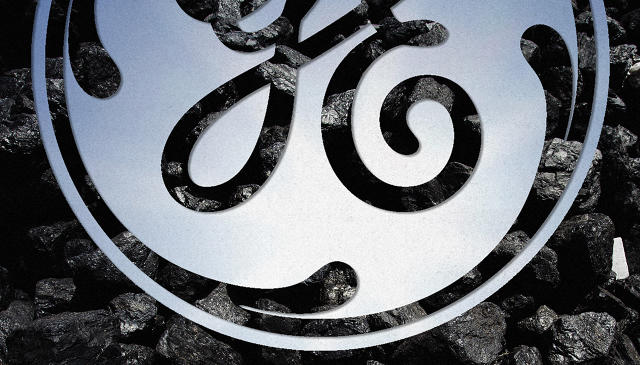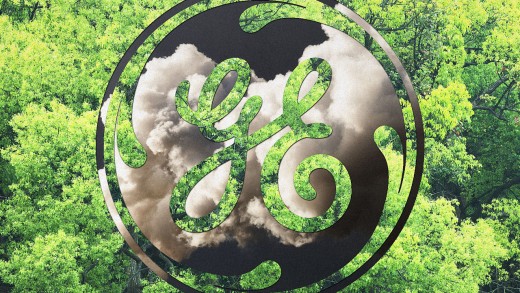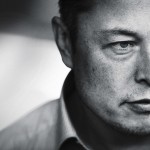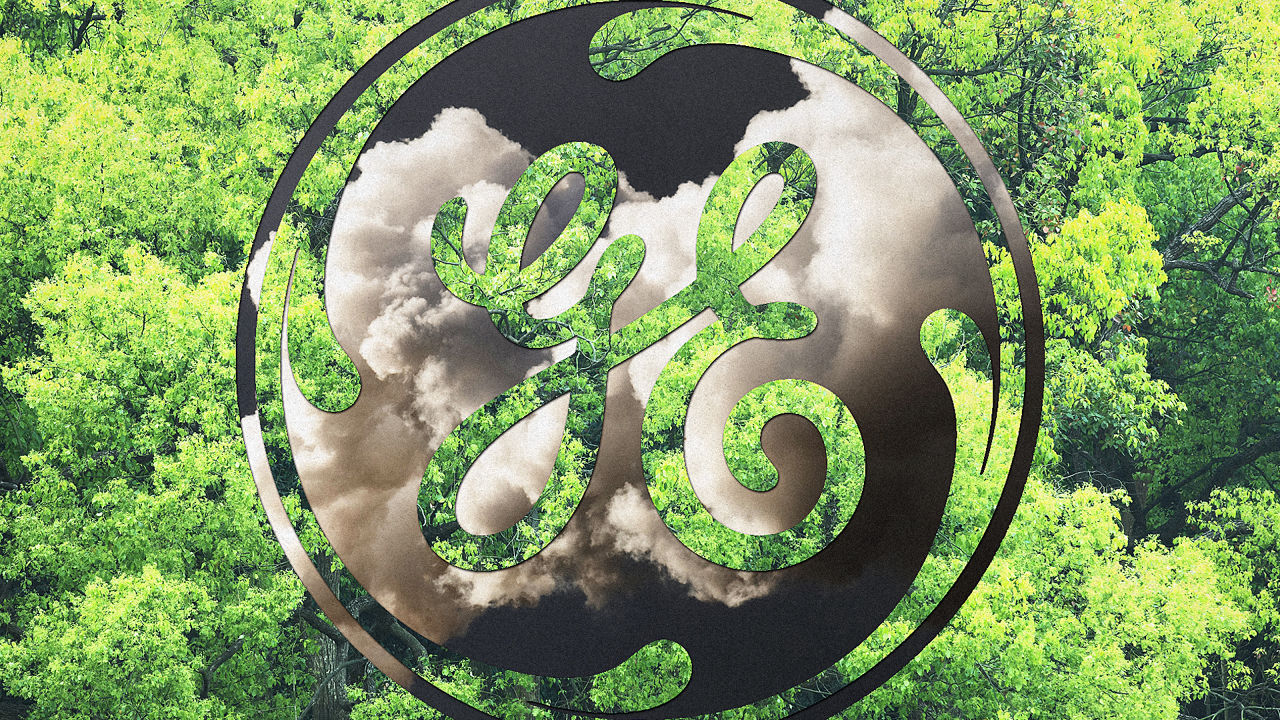9 methods GE accomplished Its Radical inexperienced Reinvention
With Ecomagination, GE guess large on efficiency and smooth power. A decade later, it can be made $200 billion, and is riding the future of the corporate.
December 10, 2015
In 2005, when GE’s CEO Jeff Immelt announced that the industrial large used to be hanging important tools right into a software known as Ecomagination, designed to emphasise energy effectivity and ecologically friendly merchandise, you do not need been mistaken in scoffing. GE used to be considered one of the most notorious polluters in American corporate history, infamous for ruining massive sections of the Hudson River with run-off from its factories. And a decade in the past, revamping an incredible industry within the quest to provide much less carbon wasn’t a mainstream proposition. At perfect, you could have said Ecomagination used to be a PR ploy, designed to gloss over GE’s environmental file and persevering with production of commercial machinery.
Ten years later, Ecomagination has proved the skeptics mistaken. It has become the lynch pin of a remarkably a hit reinvention of GE, the inspiration of the corporate’s future, and the leading edge of the global motion against company environmentalism. It’s a slogan that seems good for a second when company customers are investing heavily in the products the program is building, when governments seem to be on the verge of major environmental agreements to be able to funnel government greenbacks toward clean energy, and when the concept that businesses can do just right for the planet has been widely familiar. GE expects that corporate purchases of eco-pleasant equipment will pressure huge adjustments over the next 5 years. It predicts that gasoline cell installations will grow by means of four hundred%, that two-thirds of all new electrical energy delivered to the grid shall be from renewables, that shipments of LEDs will quadruple, that international transportation will turn out to be 10% extra environment friendly, and that one in every four new jobs within the power sector can be involved in smooth expertise. To be an environmental chief at a moment like this seems like a significant trade facet.
however this system—which GE says has generated over $200 billion in sales, while also serving because the spur for slicing its personal water usage and greenhouse gas emissions via 42% and 31%—didn’t prevail on account of great slogans or radical new ideas. It succeeded because of the painstaking means GE delivered on one of the most basic tenets of industry management. Ecomagination is a great reminder of the fact that innovation way nothing without consistent, thorough execution.

1: The earlier is history
Between 1947 to 1977, GE factories alongside the Hudson River discharged hundreds of heaps of heaps of poisonous PCBs, which had been used as desktop cleansing fluids, into the waterway. The chemical substances—which have been associated with everything from most cancers to genetic mutation in fish—devastated the Hudson, prime big apple State to ban fishing in much of the river. When govt regulators eventually ordered GE to scrub up the river, the company denied accountability, disputed the science on the toxicity of PCBs, and launched one felony effort after some other to extend the venture, or at the least minimize its extent. ultimately, the corporate launched a big cleanup, however environmentalists still debate whether or not GE’s extensive dredging of the river has finished sufficient to restore the damage.
It’s onerous to think about a much less possible candidate to announce that its future would lie with a software fascinated with the advent of environmentally environment friendly products. but that’s exactly what CEO Jeff Immelt introduced on may just 9, 2005. “green is green,” he proclaimed: GE would begin remaking its entire product line, from driers and lightweight bulbs to fuel generators and jet engines. the program can be called Ecomagination, an offshoot of its new corporate emblem, “imagination at Work,” which had replaced the arena-well-known “We carry good things to life.” Skeptics sneered. A vanity fair piece in 2006 noted that one inexperienced birthday celebration consultant known as Ecomagination, “just every other try and [disguise] years of despicable air pollution.” The wariness didn’t simply come from out of doors the corporate. “We knew we had to be cautious,” says Beth Comstock, GE’s former chief marketing officer who was just lately appointed the company’s vice chair answerable for efforts to speed up new increase, “and there used to be a lot of skepticism internally. We didn’t want to be considered as greenwashing.”
2: Set Stretch objectives—with actual Numbers
“At a company stuffed with engineers, a business initiative can’t just be a really feel-good plan,” says Lorraine Bolsinger, the manager Immelt tapped to run Ecomagination. “surroundings onerous objectives made it a decent GE initiative.” GE promised to do four things: double its $700 million R&D investment in clean know-how by 2010; double its revenues from Ecomagination merchandise; cut back its own greenhouse gas emissions with the aid of 1% through 2012; and lower its personal use of water with the aid of 20% through 2012 (this remaining goal was delivered in 2006). It was once a bold guess. GE’s annual revenues on the time had been $170 billion, and the products that are certified to fit under the Ecomagination umbrella (including efficient wind turbines, jet engines, MRI programs, appliances, power crops, and hybrid locomotives) simplest accounted for $10 million.
still, the problem of fixing complicated, international puzzles stirred up the engineers “There was loads of skepticism,” says Michael Bowman, who leads analysis into sustainable energy. “however the younger, more moderen employees were excited.” nowadays, Ecomagination has blown previous these preliminary objectives. by way of 2010, GE had invested $5 billion in smooth tech R&D. It had diminished its greenhouse fuel emissions by way of 22%, and water use by way of 30%. perfect of all, revenues from Ecomagination expertise had reached $85 billion. In early 2014, GE announced a brand new set of ambitions for Ecomagination: through 2020 it promises to take a position every other $10 billion in easy expertise R&D, and to reduce its own greenhouse fuel emissions and water usage through 20%.
three: walk the stroll
reducing its personal useful resource utilization wasn’t just an exercise in making workers really feel related to Ecomagination. It used to be a key method to determine how GE could assist customers with their current amenities. As Bowman explains, “On the one hand there’s growing new products for sale; when you design a brand new jet engine that you may modify all of the design parameters you want. Whereas if you try to make massive improvements in one thing that already exists, like a factory, say, that’s extraordinarily challenging.” Many GE engineers, together with Bowman, had been tasked with discovering effectivity enhancements in existing plants and strategies. “We began doing what we referred to as ‘treasure hunts,’” says Bolsinger. “[We would see] if there have been ways to use own products at our own amenities to support efficiency.” That might mean replacing a manufacturing facility’s previous sodium halide lights with CFL bulbs. (When Bolsinger used to be moved out of Ecomagination to move up the Aviation division, the very first thing she did was once investigate cross-check the overhead mild bulbs in her own place of job; she quick had them modified to extra efficient models.) A facility in Ohio uses millions of gallons of gasoline to generate electrical energy for trying out aircraft engines; a workforce there figured out a strategy to retailer three million gallons of fuel per year by using transferring checks within, reducing run occasions, and higher calculating the fan steadiness weights. All these techniques have been then handed alongside to GE shoppers, so that they too may reduce down on vitality usage.

four: put in force Collaboration
Ecomagination management used to be neatly aware that many a company initiative has fallen flat without buy-in from mid-stage managers and their staffers. in order that they built processes into the initiative that put Ecomagination on the front and center of product construction. At GE, merchandise don’t get launched except assessments of a number of criteria, corresponding to value advantage to buyers, price ticket in comparison with other business choices, and time to market, were analyzed. Managers now provide equal precedence to Ecomagination criteria, such as environmental impression and useful resource efficiency.
It’s a easy step to make sure that the goals of engineers (clear up problems that advantage consumers) healthy up with the targets of the finance side (maximize earnings). To make certain that launches aren’t slowed down by way of the potential bureaucracy created by using all these assessments, GE also changed any other process. up to now, the corporate would do one review after every other, bringing in, say, the water experts first, adopted via the fuel staff, adopted with the aid of the environmentalists. Now GE attacks all the assessments concurrently with a cross-purposeful staff of staffers drawn from all completely different departments. It’s a quicker, extra efficient method, which will iron out problems created with the aid of the different priorities of different departments earlier. It additionally reflects the truth that GE’s buyers are more fascinated with the environmental impact and resource financial savings of new purchases than they have been in the past. they want that data up front, as a substitute of being surprised via these penalties later.
5: that you may’t Win ‘Em All
When Immelt bet that GE’s future used to be in promoting clean, efficient products, he made a few assumptions in regards to the future. not all of them have come true. In 2006, David droop, then normal manager of selling, said to self-importance truthful: “the only means we are going to ever get a return on our funding in these applied sciences is if greenhouse gases have a monetary worth.” the speculation used to be that wary company customers would most effective be encouraged to purchase green if there was once a market for carbon credits. but the Bush administration gutted that idea in the U.S. with the aid of fiercely resisting the cap-and-trade regulations set forth within the Kyoto Protocol. And European efforts to create a market were sabotaged through the recession of 2008-2009. It’s that you can think of that the sector may just eventually put a price on carbon after the local weather alternate talks in Paris, and stoop (who left the company in 2007) and Immelt weren’t definitely flawed, just a decade early. James Cameron, a attorney on Ecomagination’s advisory board who has been interested in many main climate change negotiations, says, “Now that China has signed on, there are plans in location so as to cover 80% of the the worldwide economic system by way of subsequent yr.”
Immelt additionally wager that the stock market would reward GE for its shift, figuring out the intelligence of this ahead-taking a look guess. but that by no means came about. Immelt’s predecessor, Jack Welch, who left in 2001 after a 20-12 months run, was well-known for sending GE’s market worth sky-high.GE’s return to shareholders. Shareholders haven’t fared nearly as smartly underneath his successor, Immelt. Shareowners who held the stock from 1980 to 2000 loved a 23% reasonable annual return. within the decade following, the inventory value dropped by means of half of. however this, too, could also be due for a reversal. GE has made itself a more focused firm through divesting itself of its finance arm, GE Capital, and lots of analysts see great doable for the inventory within the years ahead. “The funding community didn’t present a reward within the inventory worth for what GE is doing,” says Cameron. “however the leadership persevered anyway. In time, this will likely be regarded again on as one of the nice corporate selections. It was this sort of truly intelligent manner of working out how the sector used to be altering.”
6: Don’t Confuse a Slogan with a gross sales Pitch
over the years, “Ecomagination” turned into a rallying cry inside the firm, and GE used it closely in its advertising and marketing. but customers? None of them have been buying products as a result of GE’s flashy portmanteau. “whilst you promote,” says Steve Bolze, CEO of the $28-billion-a-year energy & Water division, “buyers want quantifiable terms.” So when Bolze’s salesmen pitch a brand new gasoline turbine to utilities, they arrive armed with lots of specifics. How a lot fuel will the utility store on account of the turbine’s efficiency? better but, how much cash will the utility keep because it isn’t using all that gas? Even higher, how much will it save plus how far more will it earn, thanks to the turbine’s larger output? That’s the stuff that closes a sale. The merchandise could also be new and flashy and clean, however selling them is the same down-and-soiled, backside-line-driven trade as all the time.

7: apply Your nostril
by means of following the tenets of Ecomagination at any place they lead, GE has utterly revamped its product mix. Now that the corporate has bought off its GE Capital division, which once accounted for 50% of the corporate’s earnings, Ecomagination products deliver some 30% of total gross sales. Environmentally-pleasant merchandise are high-growth agents across the trade. (the majority of GE’s gross sales still come from products—starting from energy provides to drilling motors and oil field gear—that aren’t a part of Ecomagination, though an organization spokesman says that GE targets to keep growing the division’s portfolio.) In 2005, gross sales of wind generators accounted for lower than $2 billion in gross sales. Wind generators (which most often price round $1 million per megawatt, in step with Windpower month-to-month) now usher in around $6 billion a year; GE Wind put in four,624 megawatts of turbines in 2014, versus 2,056 MW in 2005. GE’s not too long ago launched 1.6 MW, one hundred-meter rotor turbine had sales of $1.5 billion in its 2d year on the market. the brand new H-model fuel turbine, which places out record low emissions because it generates electricity for utilities, governments, and large company consumers like Mars, debuted just 18 months in the past and already has $1 billion price of back orders lined up.
Bowman believes a lot of these efficiencies will drive GE’s future merchandise as well. while the company claims that ninety eight% of the wind that hits the its turbines is became power, he and his researchers nonetheless wanted to determine find out how to marshal that last 2%. The useless wind is on the very heart of the turbine, so for the past year his staff has been experimenting with a expertise that deflects these gusts out to the blades, the place their power will also be harnessed. It’s the identical roughly efficiency search that the wind workforce was once working on a decade ago, however each marginal acquire inspires another effort.
8: Go Digital
Immelt’s guess has positioned the corporate completely to take advantage of what might smartly be the subsequent great industrial jump ahead: The internet of issues. Sensors which might be integrated into the company’s products can record all kinds of information: fuel usage, pace, down time, effectivity, and so forth. as soon as that data is shipped to a primary processing unit, commands in line with the data will also be sent again to the jet engine, or the locomotive, or wind turbine, adjusting its performance for optimum effectivity. Writing for fast firm closing yr, Jon Gertner stated the instance of GE’s new go back and forth Optimizer device, which helps locomotive operators store millions of dollars every year in diesel prices by using improving the effectivity of freight train commute. those forms of financial savings can also be utilized to wind turbines, or to a pair of GEnx jet engines on a Boeing 787 Dreamliner, which spin out a terabyte of information each day. All these terabytes can lend a hand a utility better manage how so much energy to provide from wind sources vs. coal vs. sun.
At its perfect, digitization results in decarbonization, says Bolze. Digitizing its merchandise will actually have a profound impact on the best way GE serves its consumers. As increasingly of its merchandise get subtle software capabilities, GE can replace them simply the way Apple updates the software to your Mac. the result for an airline, for instance, is longer existence for its present engines. “as an alternative of shopping for the part,” says Deb Frodl, the current world government director of Ecomagination, “they get an improve equipment.” That’s an important shift in thinking: sooner or later, GE could to find itself promoting effects as a lot as it is promoting products. Bolze’s unit has has generated over $1 billion from an upgrading carrier it bargains to its gas plant customers. And this fall the company introduced a new trade known as current, which helps buyers customize a mix of vitality applied sciences, from environment friendly light bulbs to solar power, to drive down their power prices. Intel, HCA and Hilton are probably the most early consumers of current, which GE hopes to turn out to be a $5 billion-per-12 months industry.
9: include Transparency
“it is a totally different playbook from the Hudson River,” says Comstock, the use of language that hints on the firm’s prior battles to keep away from its environmental responsibilities. “We’ve had to work extra with clients, countries, NGOs and different firms. We released our efficiency metrics. Ecomagination has compelled us to open ourselves up extra.” GE’s future an increasing number of is dependent upon partnering with outside corporations to resolve trade-wide global issues. it really works with Intel on developing smarter factories, Walmart on extending the reach of renewable merchandise, whole on creating hybrid smooth power methods, and even a mining company on lowering emissions. it works with natural gasoline companies to decrease the environmental affect of fracking. And it really works with Silicon Valley in a method it by no means had ahead of. GE employs heaps of programmers in a facility in San Ramon, and has tried through the years to insinuate itself into Valley tradition. It’s even making excellent enjoyable of itself (and the Valley) in its contemporary “What’s the subject with Owen?” ads, the place a younger man fails many times to give an explanation for why his programming job at GE suits with the company’s industrial legacy or is as cool as a gig designing apps the place you put things on cat’s heads.
on reflection, it’s clear that Immelt set GE’s sights too low again in 2005. GE hasn’t definite all its skeptics—in its 2014 “green Rankings” of 500 American corporations, Newsweek positioned GE at number a hundred and eighty. however the launch of Ecomagination has proved to be a turning point within the evolution of corporate environmentalism. As Lee Scott, the former CEO of Walmart, said in 2006, “”there isn’t any question that [Immelt] has taken a leadership role and are available to be considered as a Pied Piper of sustainability.” with the aid of pushing ecological priorities down the availability chain to its heaps of suppliers, Walmart is just one of many companies which have proved as aggressive on the environmental front as GE. pushed by using beneficial properties in effectivity, worry of presidency regulation, and the clear emergence of an actual market, many corporations followed GE’s lead. “The success of the entire high-quality services and products which have emerged from Ecomagination is something that other businesses can take note and observe,” says Cameron. “It’s been an train in fable-busting. GE has proved that so a few of the causes companies provide to now not invest in this type of stuff is solely simple improper.”
fast company , read Full Story
(46)














